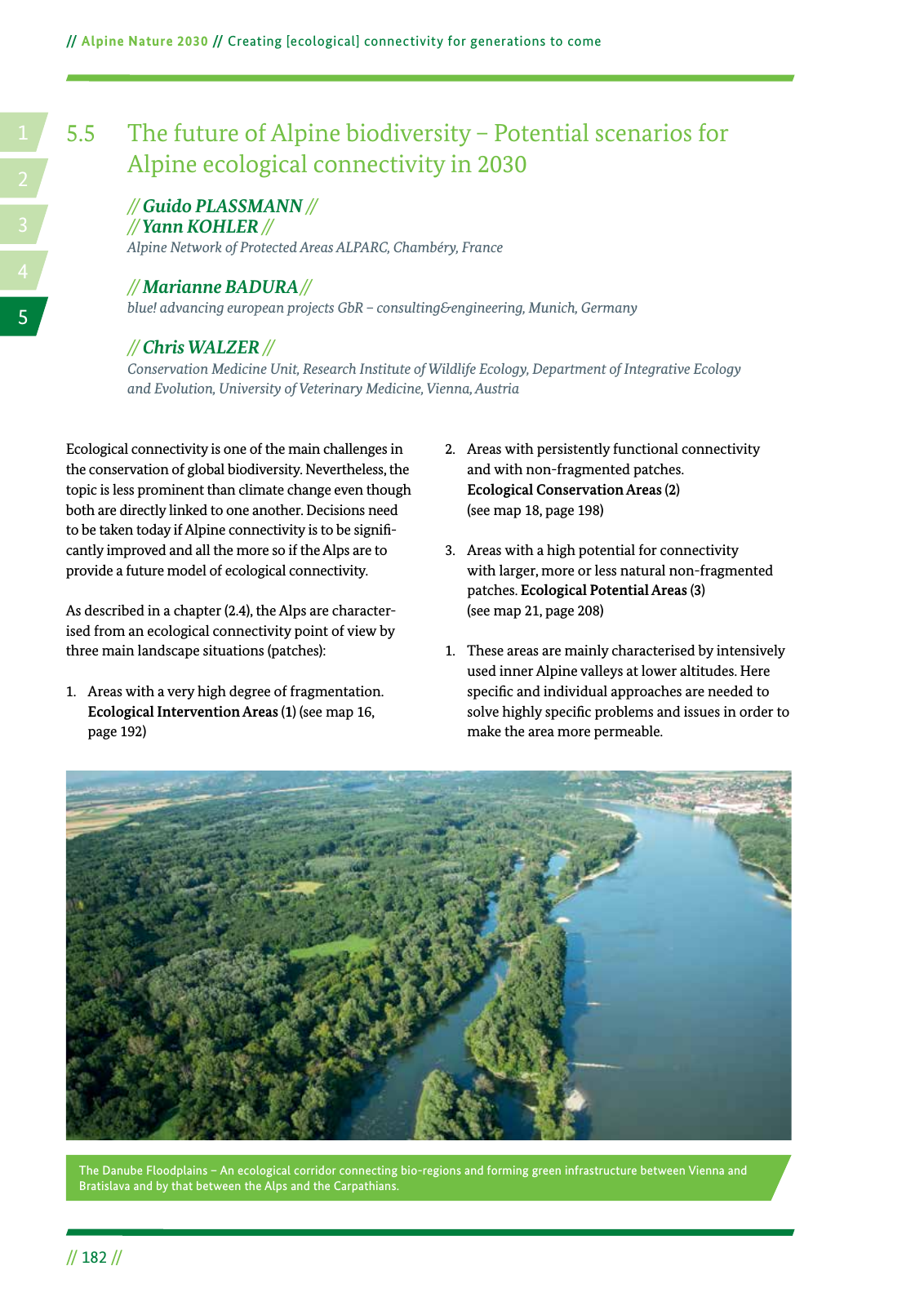14 2 5 3 Alpine Nature 2030 Creating ecological connectivity for generations to come 182 5 5 The future of Alpine biodiversity Potential scenarios for Alpine ecological connectivity in 2030 Ecological connectivity is one of the main challenges in the conservation of global biodiversity Nevertheless the topic is less prominent than climate change even though both are directly linked to one another Decisions need to be taken today if Alpine connectivity is to be signi cantly improved and all the more so if the Alps are to provide a future model of ecological connectivity As described in a chapter 2 4 the Alps are character ised from an ecological connectivity point of view by three main landscape situations patches 1 Areas with a very high degree of fragmentation Ecological Intervention Areas 1 see map 16 page 192 Guido PLASSMANN Yann KOHLER Alpine Network of Protected Areas ALPARC Chambéry France Marianne BADURA blue advancing european projects GbR consulting engineering Munich Germany Chris WALZER Conservation Medicine Unit Research Institute of Wildlife Ecology Department of Integrative Ecology and Evolution University of Veterinary Medicine Vienna Austria 2 Areas with persistently functional connectivity and with non fragmented patches Ecological Conservation Areas 2 see map 18 page 198 3 Areas with a high potential for connectivity with larger more or less natural non fragmented patches Ecological Potential Areas 3 see map 21 page 208 1 These areas are mainly characterised by intensively used inner Alpine valleys at lower altitudes Here speci c and individual approaches are needed to solve highly speci c problems and issues in order to make the area more permeable The Danube Floodplains An ecological corridor connecting bio regions and forming green infrastructure between Vienna and Bratislava and by that between the Alps and the Carpathians

Hinweis: Dies ist eine maschinenlesbare No-Flash Ansicht.
Klicken Sie hier um zur Online-Version zu gelangen.
Klicken Sie hier um zur Online-Version zu gelangen.